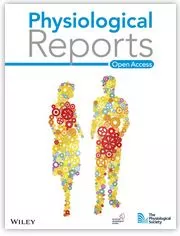Denis Holzer 1, Daniel Hahn 2,3, Ansgar Schwirtz 1, Tobias Siebert 4, Wolfgang Seiberl 1,5
1 Department of Sport and Health Sciences, Biomechanics in Sports, Technical University of Munich, Munich, Germany
2 Faculty of Sport Science, Human Movement Science, Ruhr University Bochum, Bochum, Germany
3 School of Human Movement and Nutrition Sciences, University of Queensland, Brisbane, Australia
4 Department of Motion and Exercise Science, University of Stuttgart, Stuttgart, Germany
5 Department of Human Sciences, Institute of Sport Science, Universität der Bundeswehr München, Neubiberg, Germany
Abstract
During the shortening of stretch-shortening cycles (SSCs), muscle force output is enhanced compared with pure shortening (SHO), referred to as the SSC-effect. In general, muscle-tendon unit (MTU), muscle belly, muscle fascicle, and tendon length changes can be decoupled during contraction, which affects force generation and elastic recoil. We researched whether MTU decoupling contributes to the SSC-effect. Participants performed electrically stimulated submaximal fixed-end, SSC, and SHO plantar-flexions on a dynamometer at two velocities (40, 120°/s) and two ranges of motion (15, 25°). Fascicle and tendon length changes of the gastrocnemius medialis, and ankle joint kinematics were assessed by ultrasound and motion capture, respectively. During SSC shortening, ankle joint torque and work, MTU force and work, and fascicle force were increased by 12%–22% compared with SHO, confirming a SSC-effect. Further, fascicle length change and velocity during SSCs were significantly reduced compared with SHO condition, and SSC fascicle work was decreased by ~35%. Our results indicate that MTU decoupling leads to a reduction in fascicle shortening amplitude and velocity, thereby increasing the muscle's force capacity while reducing its work output during SSC shortening. MTU decoupling therefore contributes to the SSC-effect and underlines the limited transferability of joint work measurements to estimated muscle work.
